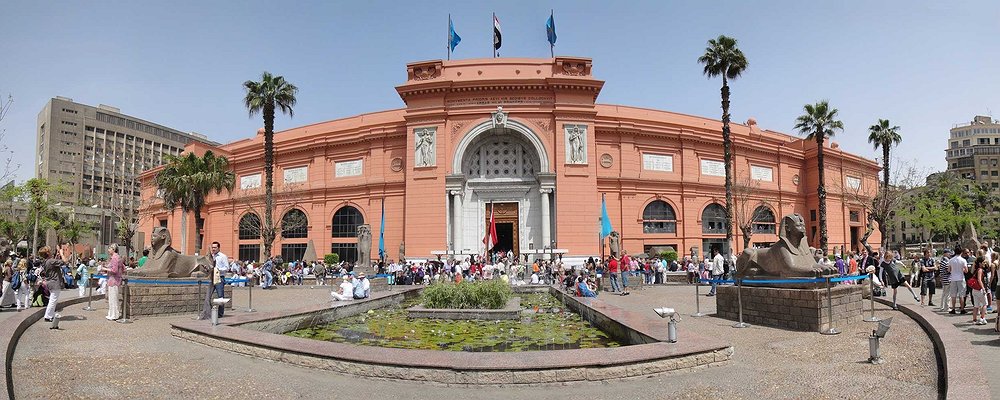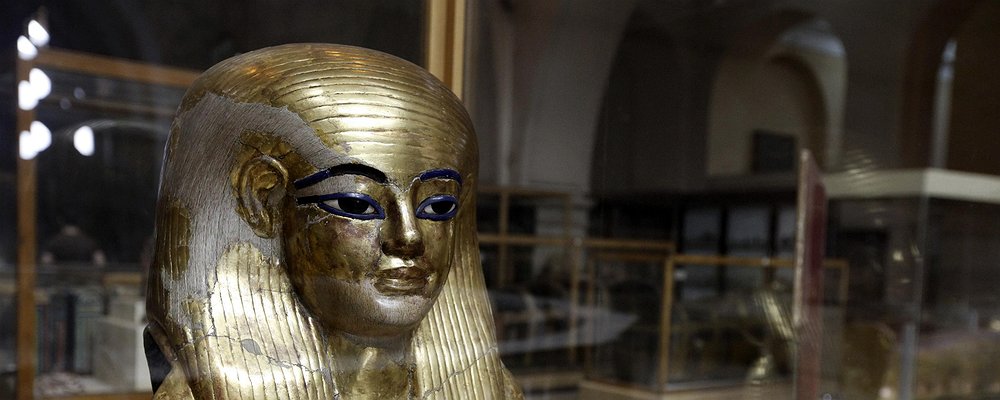Blog
Placed in the Tahrir rectangular, Cairo which is a dwelling to the finest collection of ancient Egyptian artifacts on the planet, the Egyptian museum serves as an superb introduction to historical Egypt. Though the Egyptian Museum is showing its age, a consult with right here remains one of the highlights of a trip to Egypt. The Egyptian Museum of Antiquities is considered to be the biggest museum within the whole world. With so many reveals put on display within the Egyptian museum, and even double the quantity of exhibits stored in storage rooms, the friends would take days to view the whole lot in the Egyptian Museum of Antiquities.
Inside the great domed, oddly pinkish constructing, the glittering treasures of Tutankhamun and other best pharaohs lie alongside the grave items, mummies, jewelry, eating bowls and toys of Egyptians whose names are lost to history.
The Sections of the Egyptian Museum of Antiquities in Brief
The Egyptian Museum of Antiquities consists of two flooring; the bottom floor that hosts the heavier displays like coffins, gigantic statues, and stone carvings.
The shows of this floor had been organized in keeping with the old intervals which might be the old Kingdom, the Intermediate period, the new Kingdom, the Late interval, the Greco Roman interval, and the antiquities of the Nubia.
The higher flooring of the Egyptian Museum of Antiquities hosts the lighter shows that comprise objects and tools, funerary objects, smaller statues, papyrus papers, wood coffins, jewellery, and most importantly, the displays of the Tut Ankh Amun tomb.
A Designated Walk-by Way of
One of the museum's finest portions is within the core of the ground, beneath the atrium and rotunda. The subject makes a good position to begin, acting as a preview for the rest of the museum. Among the many prized possessions listed here are three colossi of the legendary New Kingdom pharaoh Ramses II (1290–1224 BC); a limestone statue of Djoser (around 2600 BC), the 2nd Dynasty pharaoh who developed the Step Pyramid in Saqqara; several sarcophagi; and a ground from the destroyed palace of Akhenaton (1353–1335 BC), the heretic monotheist king. The Narmer Palette, a bit from about 3000 BC, is suggestion to report the first unification of northern and southern Egypt.
Rooms across the atrium are arranged chronologically, clockwise from the left (west) of the entrance: the old Kingdom (2575–2134 BC) in rooms 31, 32, 36, 37, forty one, forty two, forty six, and 47; the core Kingdom (2040–1640 BC) in rooms eleven, 12, 16, 17, 21, 22, 26, and 27; the brand new Kingdom (1550–1070 BC) in rooms 1–10, 14, 15, 19, and 20; Greco-Roman Egypt (332 BC–c. Advert 395) in rooms 34, 35, 39, and forty; and Nubian reveals in rooms forty four and 45.
Among the many primary old Kingdom gadgets are a superbly crafted statue of Khafre (2551–2528 BC), builder of the 2nd pleasant Pyramid at Giza (Room 42), and the delightful, reasonable twin statues of Rahotep and Nofret (2500 BC, Room 42). The center Kingdom show involves a few statues of Senwosret I (1971–1926 BC), responsible for the first main temple to Amun at Karnak (Room 22). The wealthy collection of latest Kingdom artifacts includes an super statue of Thutmose III (1479–1425 BC), Egypt's finest empire builder, suckling at the teat of the cow-goddess (Room 12); art work from Akhenaton's reign, the practical style of which is markedly one of a kind from some thing that came earlier than or after it (Room 3); and a number of statues and ingredients of colossi from the time of Ramses II (Room 20). The works in the Greco-Roman exhibit are usually not as spectacular as those on show in the Greco-Roman Museum in Alexandria, but they're fascinating however of their makes an attempt to weld Hellenistic and pharaonic cultures. Pieces within the Nubian section comprise saddles, weapons, and a mummified horse skeleton (Room 42)—again, of lesser excellent than the Nubian Museum in Aswan but nonetheless of curiosity.
On the museum's upper flooring is the noted Tutankhamun assortment. Seem for its attractive gold funerary mask and sarcophagus (Room three), ancient trumpet (Room 30), thrones (rooms 20 and 25), the 4 enormous gilded containers that match one within the different (displays 7 and eight, located in the hallway just external Room 30), and a royal rest room seat to boot (outside Room 30); it is without doubt one of the few air-conditioned rooms in the museum. (the collection is scheduled to be relocated to the new Grand Egyptian Museum in Giza, however, at the time of writing, building is just not yet complete.) also upstairs is the royal Mummy Room, which residences 11 pharaonic dignitaries, together with the body of Ramses II (Room fifty two). In case you are discouraged by using the mother Room's steep entrance cost, don't omit the assortment of mummified animals and birds in the adjoining room (Room fifty three), which has no further charge. Additionally on the higher flooring is a sequence of specialised displays, together with a collection of papyri and center Kingdom wood items of every day lifestyles (rooms 24 and 27).
The "Hidden Treasures of the Egyptian Museum" exhibit has more than a hundred and fifty of the best objects that type part of the museum's significant stock of artifacts kept in storage. Fittingly, the galleries sit down within the museum basement, where the catalogued gadgets used to lie on dark dusty shelves. The children's Museum, aimed notably at more youthful viewers, combines authentic artifacts with Lego units (donated via the Danish State) to explain aspects of existence and customs in old Egypt. Children are free to make use of Lego bricks to construct their own units.
When Can You Visit the Museum?
Open day-to-day, 9:00 AM-7:00 PM
9:00 AM-5:00 PM throughout Ramadan
Ticket Rate
Basic Admission:
Egyptian: LE four (LE 2, scholars)
overseas: LE 60 (LE 30, scholars)
Royal Mummies Room:
Egyptian: LE 10 (LE 5, students)
overseas: LE one hundred (LE 50, pupils)
Centennial Gallery:
Egyptian: LE 2 (LE 1, pupils)
international: LE 10 (LE 5, scholars)
How to Reach There Easily
via metro: Sadat Station, comply with signs to Egyptian Museum exit and walk straight alongside the road.
Through car or taxi: Ask for "al-met-haf al-masri"
via bus: Ask for "abdel minem-ryad"
What Can You Find There
Cafeteria, bank, post office, gift keep, library, kid's museum, institution
Taped audio courses are to be had in English, French, and Arabic for LE 20. Go to the kiosk in the front lobby to purchase.
NO PHOTOGRAPHY ALLOWED! Cameras have to be checked at constructing entrance.








comments
No comments yet.